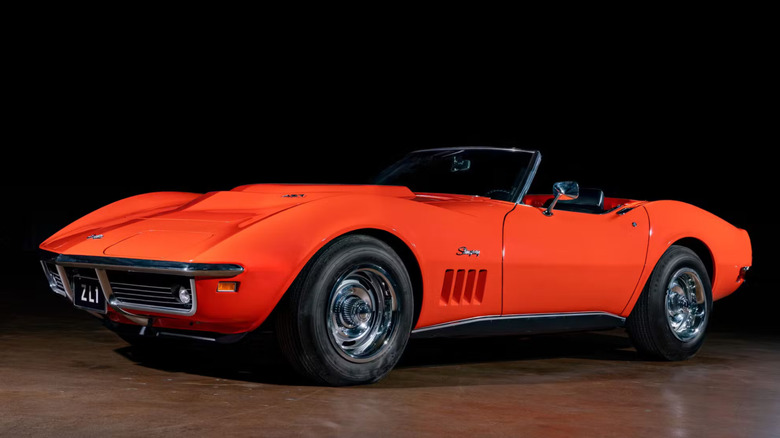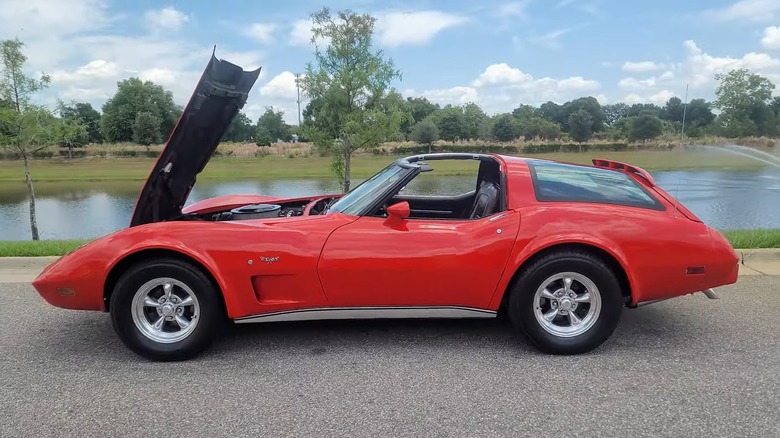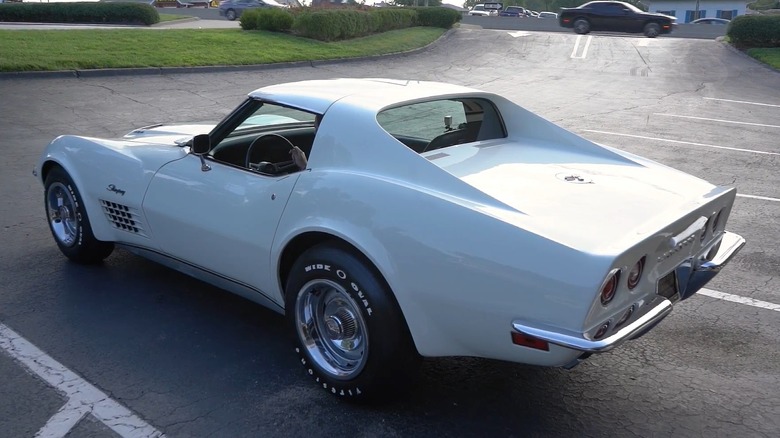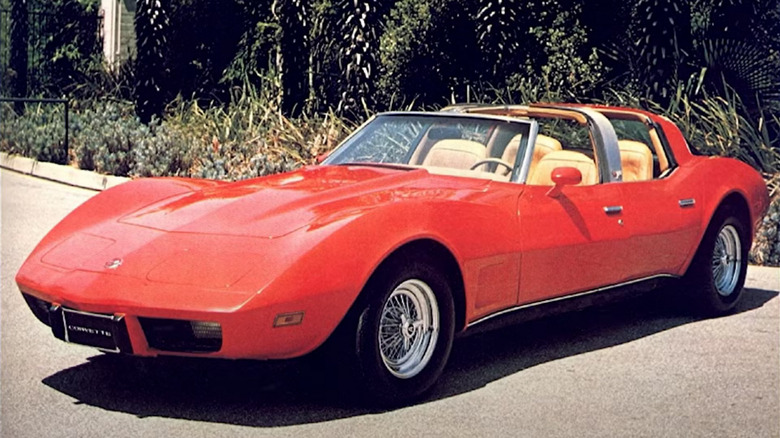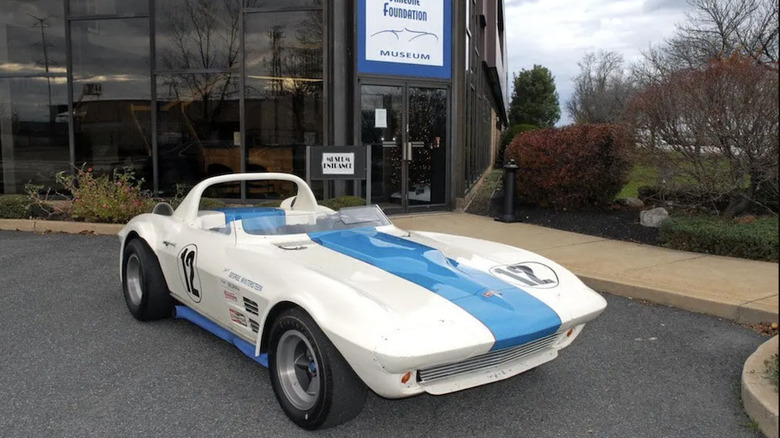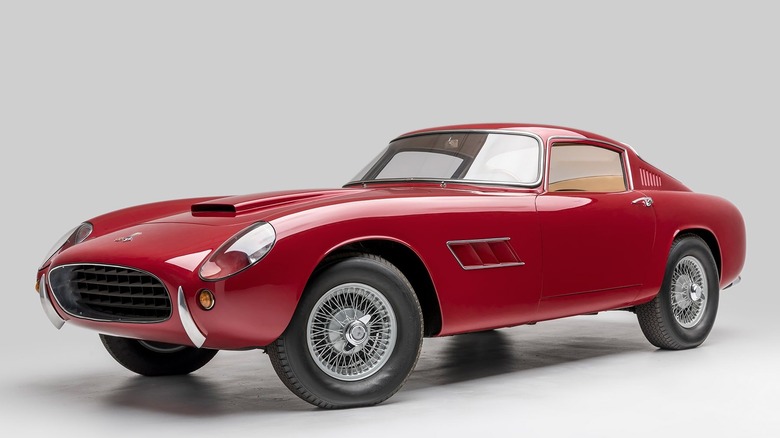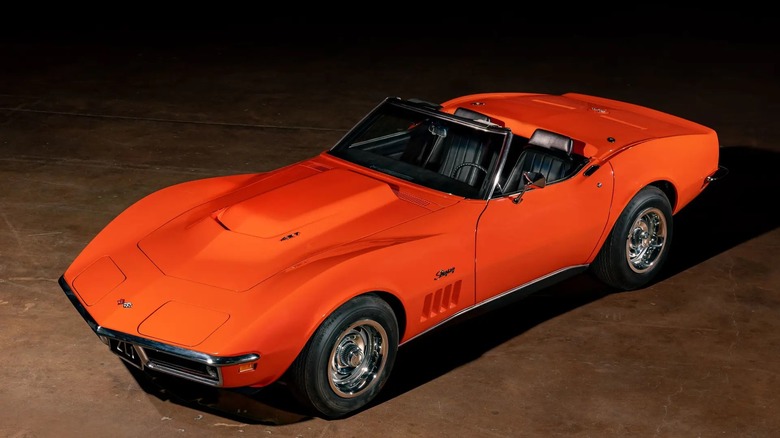6 Of The Rarest Chevrolet Corvettes Ever Made
With a production run spanning nearly 72 years and counting (excluding 1983), the Chevrolet Corvette is one of the most ubiquitous and popular sports cars in history. It's also one of the most accessible grand-tourers, with a relatively low entry cost comparable to mid-range luxury cars. A fact which pushed the Corvette from an obscure fiberglass roadster in 1953 to truly becoming "America's Sports Car," boasting production numbers teasing 2 million — a little over 1.9 million as of 2024.
We're all familiar with many of the more popular and iconic models, like the C6 ZR1, the C4 Grand Sport, or the C5 Z06. And rightfully so — these often represent some of the finest Corvettes of their respective generations. However, what about those hidden away on the other side of the spectrum? Needless to say, there's a lot of Corvette models and editions.
In fact, pretty much the only year without any consistent oddballs may be 1953, if only because that was the Corvette's first year, and only 300 were built. Sure, you have toolroom prototypes, exclusive cars like the Astrovette (only given to the three Apollo 12 astronauts), and experimental racers. But let's say you walked into a year-correct dealer and ordered one package. What are some of the absolute rarest Corvettes that you could leave that dealership with?
1975 Greenwood Sportwagon: Less than two dozen kits sold
We're really hitting the road with the tires already spinning for this first entry. Granted, this wasn't technically a factory Corvette, but rather a kit car built by the Greenwood brothers. Racing drivers and tinkerers John and Burt Greenwood originally designed the Sportwagon to compensate for the C2's lack of any functional trunk, modifying the entire rear into a shooting-brake configuration.
This involved lowering the roof line and installing bespoke glass emblazoned with the Greenwood logo on the bottom-left of the rear, along with fitting a functional rear hatch. This particular model sports a remarkable history, though only between 20-25 examples ever saw the light of day. Much like other bespoke Corvettes like the Calloways or Hennesseys, these Sportwagons remained incredibly elusive.
Sportwagons essentially became victims of their own quirkiness. That is to say, you're already purchasing a beloved grand-tourer, probably after saving up for a while. It's a tall ask to drop even more money to convert it into something which, let's be brutally honest, looks odd to a lot of non-enthusiasts. Granted, shooting-brakes are gorgeous-looking cars, and their demise is well-documented. A shooting-brake Corvette might've been a bit much for people in the mid-70s, sad to say. Still, Greenwood managed to sell around two dozen models, though sources differ on the exact number, with just two original cars known to exist today.
1971 Corvette ZR2: 12 cars sold
Zora Arkus-Duntov — a name which resonates with many major Corvette fans — proudly stamped his name on the ZR2 option code for a reason. Though not as extreme as the last car in this list, the ZR2 represented one of the absolute pinnacles of what one could order for a C3 Corvette. This car came at the height of the muscle car era, at a time when big-block V8s were as fashionable as a tailored suit, and as savage as a biker cut. Basically, this was the rough equivalent of driving around in a Hot Wheels car. It was loud, brazen, and totally unapologetically fast, to the detriment of many other comforts like handling and ease of use.
That's not to say that a 1971 ZR2 was a particularly bad Corvette. After all, it was specifically designed with big-blocks in mind, patterned after the Mako Shark II concept with its Mark IV powerplant. However, these engines frequently left a lot to be desired, with overheating problems plaguing all C3 big block 'Vettes. The ZR2 was no exception, and in addition, GM did not feature the ZR2 in any advertisements, nor did they tout the LS6 big-block included in the ZR2 package.
The successor to the famed L88, this engine produced an underrated (a common theme) 425 horsepower. Coupled with the massive sticker price commanding $7,672.80 all-in, this ultimately doomed the venerable block in the Corvette. In the end, only 188 Corvettes left the factory with the LS6, with 12 of those featuring the RPO ZR2 box checked off.
1980 Corvette America: Six cars sold, though 40 were planned
If you thought the shooting-brake Corvette was weird, how about this creature from the Malaise-Era Lagoon? The late-'70s marked a low-point for Corvettes and grand-tourers in general. Thanks to the 1973 and 1979 Oil Crises, American automakers dramatically shifted priorities, and the muscle car era came to an abrupt and definitive halt.
With it came the meteoric rise in popularity of the American sedan and station wagon. This led GM to heavily prioritize efficiency and family-friendly sensibilities in its lineup, with the Corvette a full 15 pages down in their 1980 brochures. This didn't actually phase the Corvette, however, which sold 53,807 cars in 1979, the first time breaking the 50,000 mark. Why not have the best of both worlds; a family-minded Corvette?
Hence, the Corvette America was born, possibly the strangest-looking C3 ever to come out of a dealership of any kind. This car represented the absolute apex of wild excess, built by California Custom Coach in Pasadena. Similar to the shooting-brake,the Corvette America is technically a kit car, taking a standard C3 and lengthening the wheelbase by 30 inches.
The main issue isn't with the build quality, though. Rather, it's with the eye-watering $35,000 price tag — over $133,000 today. That's approaching Lamborghini Countach money for a car that looks like a gimmick limousine. In the end, only six were ever confirmed as sold. Though Chevrolet had plans to make 40 per year — which, to no one's astonishment, never panned out.
1963 C2 Grand Sport: Five cars built out of a planned 125
Have you ever wanted your very own personal race car? Back in 1963, this was about the closest you could get. While only five ever left the plant at St. Louis, designer and Corvette forefather Zora Duntov originally intended for 125 such examples. The reason why revolves around the purpose behind the Corvette in the first place — namely, it was the American answer to European touring cars.
With GT racing growing in popularity in the U.S., the Corvette and AC Cobra represented the only vehicles with any major presence in the 1962 SCCA season. Independent teams fielded many early Corvettes in late '50s and early '60s series, with various experimental models by Chevrolet paving the way for the C2's success on the track. While the C2 ultimately became a grand-tourer for the road, Duntov's vision certainly left a lot of room for its dominance on-track. Enter the Grand Sport — Duntov's idealized vision of a Corvette which would secure GM's dominance in sports car racing for years.
The Grand Sport became easily one of the most potent factory racers in decades, developed as an early example of a homologation special. The main issue was that this vehicle wasn't exactly above-board, since GM officially banned factory-sponsored racing in 1957. This effectively sealed the Grand Sport's fate. Nevertheless, all five extant cars feature storied racing pedigrees, with one remaining in original, unrestored condition. With a 377 cubic-inch V8 "rated" (in heavy quotes) to 550 horsepower, the C2 Grand Sport also represented the most powerful production Corvette (by quoted power figure) to leave the factory until the 2009 ZR-1.
Scaglietti Corvette: Three coachbuilt cars built
If American V8s are known for one thing, it's for producing reliable power. And they don't just make large power figures, but they generally don't leave drivers stranded, something which stands in stark contrast to (many) Italian high-output engines of the 1950s. However, while Ferraris weren't exactly reliable, their GT cars were unquestionably fast and won races. This became the primary focus of Texas oil contractor Gary Laughlin, who contracted Italian coachbuilder Scaglietti to construct three "Ferraris" using Corvette components. This marriage resulted in the Corvette Italia by Scaglietti: Three unique and totally-bespoke GT cars featuring aluminum bodies around a C1 Corvette chassis.
Their main advantages rested in lightness and reliability, with the custom bodies weighing 400 pounds less than any regular-production Corvette. Despite this, their handling was cited as "heavy" and "imprecise," and they never lived up to their expectations. To be fair, these vehicles blur the line between what's considered "production" versus "experimental." However, they all used original 1959 Corvette running gear and engine components, being more akin to coach-built cars of old like Duesenbergs or Bugattis. Some of which were absolutely gorgeous, mind you, but also generally entirely handmade.
Conversely, the Scaglietti Corvette is more akin to a regular Corvette with a handmade body on it. A handmade body built specifically for legends like Gary Laughlin, Jim Hall, and Carroll Shelby, granted. But underneath that exquisite Italian exterior lies the beating heart of a fuel-injected 283 sat on a production frame. And if you had the money and connections, you could feasibly contract Chevrolet to give you a bare frame and Scaglietti to build you a body, like what Laughlin did. That makes the Scaglietti Corvette among the rarest (and certainly most expensive) ever produced.
1969 Corvette ZL1: Two sold to the public
This final model represents the pinnacle of rarity. It's not the most expensive, nor is it the oddest-looking. But in terms of what you could go into a dealership, order, and walk out with, nothing beats the 1971 ZR2's older brother — the 1969 ZL1. Its rather innocuous (for a 'Vette) exterior hides a very, very dirty secret indeed: A grossly-underrated aluminum-block variant of the L88 427 big-block. This engine produced a quoted 430 horsepower, five less than the top-rated L71 427.
In addition, Chevrolet advertised the ZL1 RPO code as being for "off-road application only," hinting at their intent. Much like the 1968 Hemi Hurst Barracuda and Dart, Chevy never intended the ZL1 for on-road use. Rather, this was purely a racing engine housed inside a road-going chassis. Further deterring the public was the price: A frankly ludicrous $4,718.35, on top of other required options — not including the $4,781 base price. Basically, you're paying the price of two Corvettes for one with no power steering, heater, or radio, and is only rated to run on race gas.
Now, as far as collector Corvettes, there's simply nothing rarer out there. Only two were ever sold, according to GM's official records. However, the true number of 1969 ZL1 Corvettes likely stands at a higher number, with claims of anywhere between seven and 94 so-equipped. Their story mimics many tall tales of the era; L88 powerplants weren't exactly unobtainable, so it's relatively easy to just swap it. Plus, racing ZL1s were never sold through dealerships, so records become muddled at a certain point.
Still, there is one definitive number: Exactly two were sold to the public. And both are accounted for, seven-figure Corvettes. While a supposed third crops up every now and then, it's generally accepted that the known pair will likely remain the rarest production Corvettes of all time.
